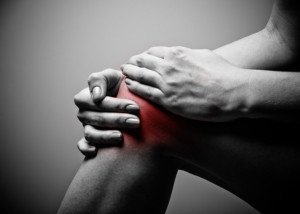
Specific exercises will help prevent osteoarthritis of the knees.
But which exercises, specifically, just might prevent this common painful condition?
A study has some surprising results, and enthusiasts of prolonged running won’t like these results.
I’m a former certified personal trainer, and I’m not ready to accept these results, even though they are indeed the results of a carefully controlled study headed by Thomas M. Link, MD, radiology professor and chief of musculoskeletal imaging at University of California, San Francisco.
Dr. Link explains in his report, “According to the results of our study, participating in a high-impact activity, such as running, more than one hour per day at least three times a week appears associated with more degenerated cartilage and potentially a higher risk for development of osteoarthritis.”
Dr. Link adds that “light exercise” and avoiding “frequent” knee-bending may guard against development of osteoarthritis in the knee.
This condition afflicts about 27 million Americans over age 25.
Before you conclude that high-impact exercise is a risk factor for knee osteoarthritis only in those already at risk, such as obese people, or people with previous knee injuries, this study included a control group who did not have outstanding pre-existing risk factors for the condition.
The researchers studied 132 subjects without symptoms, but at risk for knee osteoarthritis.
Also recruited were 33 control subjects who were matched for age and body mass index. Subjects included 66 men and 99 women between 45 and 55.
They answered the Physical Activity Scale for the Elderly questionnaire, and based on that, were placed into three strength training and exercise levels.
For “exercise,” the divisions were: sedentary, light, and moderate to strenuous. For “strength training,” the divisions were: none, minimal and frequent. Subjects also did knee-bending.
Among the three exercise groups, who had the healthiest knee cartilage? The light exercisers.
Among the strength trainers, who had the healthiest cartilage? The “minimal” group. MRI imaging verified the findings.
For women who did moderate to strenuous exercise, an association existed for more degeneration of knee collagen.
The study found that the following physical activities were tied to greater cartilage abnormalities:
Squatting to lift items over 25 pounds, going up at least 10 flights of stairs daily, and deep knee-bending or kneeling at least 30 minutes daily.
Dr. Link says that frequent bending of the knee, and strenuous exercise, are risk factors for osteoarthritis.
According to this study, then, the best kind of exercises for prevention of knee osteoarthritis are the absence of strenuous exercise, avoiding frequent knee bending and squatting, and avoiding high-impact activities like tennis and running.
More specifically, the exercises that may prevent knee osteoarthritis are low-impact like walking, swimming and the elliptical machine.

Dreamstime.com Orangeline
Hovis adds that frequent walking in particular, is the smarter choice for preserving healthy cartilage.
I do have questions:
1) Have any studies been done comparing the development of degenerated knee cartilage between lifelong rigorous exercisers, and people who began rigorous exercise later in life?
2) Have any studies been done comparing only lean people to lean people?
3) Have any studies been done that excluded poor exercise form or unsafe biomechanics?
For example, when someone uses the Smith machine for squats, foot position can alter how this affects the knee architecture over time.
4) Has the effect of high intensity interval training on risk of knee osteoarthritis or preservation of cartilage been examined, versus research focusing only on steady-state or long duration running?
If you are not symptomatic for knee osteoarthritis, do your homework very thoroughly before deciding to give up running, plyometrics, barbell squats and, in general, strenuous exercise routines.









































